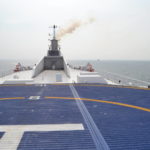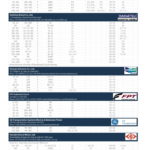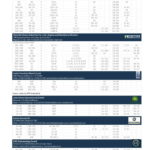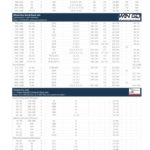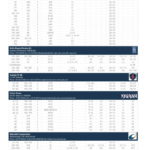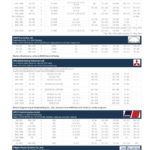The maritime large engine industry is facing big challenges to help the shipping industry meet the IMO’s climate goals. There is no silver bullet in sight, but many options that already promise good progress
The latest CIMAC World Congress in Vancouver was titled »Meeting the Future of Combustion Engines«. Presentations and panel discussions made[ds_preview] it quite clear that there is no panacea for this future, i.e. for reducing or eliminating greenhouse gas emissions. Engine manufacturers are struggling with the »Initial Strategy« for decarbonisation adopted by the International Maritime Organisation (IMO) in 2018, which contains targets for the total annual greenhouse gas emissions of international shipping. At the same time, the 2016 Paris Convention on Climate Change calls for efforts to completely eliminate greenhouse gas emissions.
The large engine industry is confronted with paradigm shifts, it says in the follow-up to the CIMAC Congress. A large number of contributions presented advances in traditional technologies that have the potential to make useful contributions through improved fuel efficiency. But radical solutions are also under discussion: carbon-free fuels or fuels with greatly reduced emissions. In particular, the open panel discussions led to a controversial exchange on suitable solutions for the future, including in particular the »power-to-fuel« strategy.
»The inevitable conclusion? Achieving the prescribed reduction values is a mammoth project, and there is and will be no all-encompassing miracle cure that would make it possible to achieve the goals of the IMO and Paris. Nevertheless, options such as biofuels offer a partial response from today’s perspective, while synthetic fuels will be necessary to ensure that the engine industry can meet all expectations,« the CIMAC stated.
The Engine manufacturers do not take climate targets lightly. Most people are now recognising man-made climate change as a problem while companies in the engine industry have to come up with something to stay in business. Electric shipping with batteries and fuel cells is not yet ready to replace combustion engines, but anyway: »failure is not an option« was already the motto in the run-up to the conference. The engine industry is calling for cross-sector cooperation to reduce greenhouse gases within a legal framework that is open to different technologies. Although batteries or fuel cells are promising, they cannot cover today’s propulsion needs of large ocean-going ships on long-haul routes. Some technologies could have the development potential to become viable solutions for short sea shipping, while others would have to be developed for the requirements of long distances. Currently, the switch to LNG is necessary and helpful, but should be seen as a bridging technology if it is still based on fossil fuels. Hydrogen and climate-neutral (bio- or synthetic) fuels are a solution, but still far from competitive.
At the same time, engine manufacturers are bringing innovative ship concepts (more efficient hulls, system integration and optimisation) and broader digitisation (including optimisation of port calls and the entire supply chain) into play. While slow steaming requirements are rejected as providing no incentive for further development, derating of engines is promoted, as it offers the possibility of reducing the maximum speed of a ship and thus bringing the actual load point in line with the constructive load point. By its very nature, this would provide a speed advantage for the best performer or design.
There is no silver bullet but a range of technologies that have to be further developed and integrated, requiring an even wider range of stakeholders. A consensus is therefore needed on finely focused R&D activities with clearly defined goals. »Regulatory support is crucial here, and that means research funding; but first and foremost, a clear and stable global legal framework is needed that does not set a specific technical direction. Only regulatory work that is regarded as technology-neutral has the chance of attracting the necessary investments worldwide,« CIMAC said.
New demand, new products
While non-fossil fuels are a hot topic, developments on conventional machines are also going forward – always with a focus on efficiency, reduced emissions and alternative fuels. In June, Winterthur Gas & Diesel (WinGD) was prompted by the demand for more environmentally friendly engines to release new, slow-running two-stroke engines that can run on low-emission fuels. The new X40DF in standard configuration is designed for operation on LNG and it is the first two-stroke dual-fuel engine for smaller ships. It already complies with all emissions regulations including IMO Tier III without needing exhaust aftertreatment. The new X82-D offers larger vessels the opportunity to switch to LNG. With the same extended drive options as the X82-D, the new X82DF is the latest addition to the low-pressure dual-fuel portfolio. The engine dimensions are based on those of the X82-D, but follow the Otto combustion principle, in which gas and air are premixed. The integrated gas pressure regulator unit (iGPR) replaces the stand-alone GVU. The prechamber technology and advanced design of the low pressure gas inlet valves provide high combustion stability and reduced emissions with NOx emissions below IMO Tier III level in gas operation.
Meanwhile, Rolls-Royce Power Systems has launched the fifth generation of the MTU S4000 with exhaust aftertreatment and a new gas version in the marine sector to meet even the most stringent exhaust regulations. In addition, a new electronic monitoring system for ships was developed together with ZF to improve availability, fuel consumption, and emissions of ships.
MAN Energy Solutions is currently working on a low-pressure two-stroke gas engine to expand its dual-fuel portfolio. The machine is not yet on the market; development is scheduled to continue until 2022. However, it is also clear here where the development is heading. The low-pressure engine is to close a gap in the portfolio to the high-pressure ME-GI engine. Together with the shipbuilder DSME and HSD Engine, MAN ES is also currently working on the digitization of ship engines and auxiliary systems, the acquisition and analysis of data and their integration into intelligent ship platforms and intelligent diagnostic solutions.
Wärtsilä is continuing on its path to becoming a system provider. Recently, the Finns did not talk about a new engine, but about a hybrid solution for a bulk carrier: engines, batteries, power distribution and solar cells – all combined in one system and connected via Wärtsilä HY.
On the following pages HANSA as usual provides you with an overview of the marine engine market, including the familiar portfolios of the international engine makers as well as new additions and changes.





